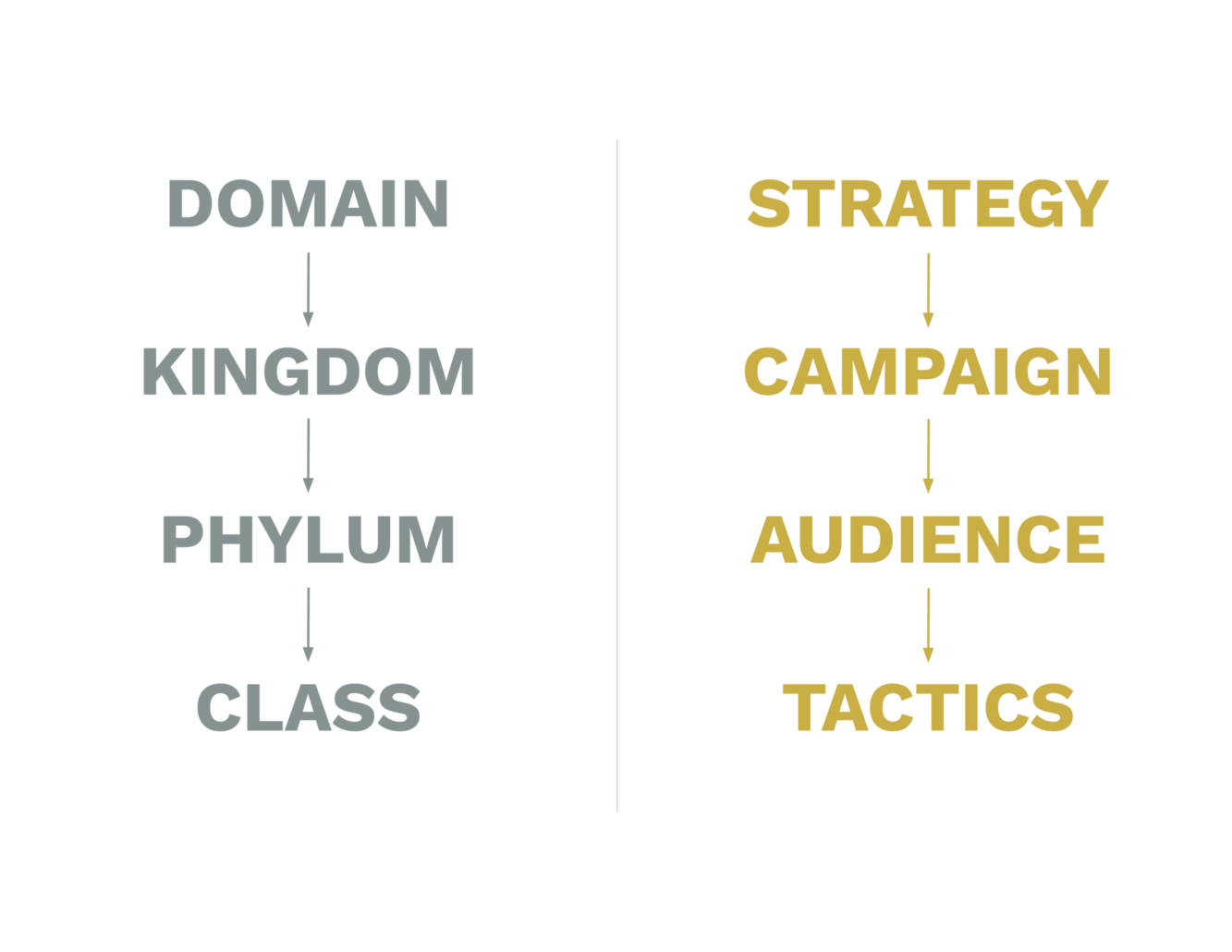In today’s competitive marketplace, you need every competitive edge you can find. Marketing can do that. An organization’s success hinges on its ability to productively reach and engage with its target audience, and to do that you need an effective marketing strategy. But what is a marketing strategy? This post will unpack the concept of a marketing strategy and highlight its role in empowering businesses to thrive in the marketplace.
Strategy
A marketing strategy is a plan of action that determines how your business will attain a specific goal. Creating a marketing strategy is more than compiling a list of to-dos and performing them to stay relevant in your industry. If you think about a marketing strategy as a taxonomic rank, strategy is your domain (or your top-tier goal) devised with multiple practices implemented to get leads and grow your business. What falls within a marketing strategy are the campaign, audience, and tactics. Let’s dig deeper into the specifics so you have a better understanding of why this is useful.
Campaign
Campaigns are the starting point of your marketing strategy. Ultimately, your goal as a business owner is to have a plan that promotes your business to the clients that you will connect with. Your marketing should solve a challenge your business strives to overcome. In an ideal strategy, your campaigns would be separated by their primary focus or goal. Most campaigns are separated into four main categories:
Visibility: People already search for and know your solution exists, but you lose their business to competitors who show up more prominently than you do.
Awareness: You offer an innovative solution to a common problem but most people aren’t actively searching for a solution because they don’t know one exists.
Trust: Your offering is a significant investment, a long-term commitment, and most customers need a lot of information before they trust you enough to purchase.
Differentiation: You offer an alternative to a well-known product/solution, but people tend to stick with what they already know.

Audience
Once you define each campaign by your specific business needs, you have to decide who you need to talk to. Your marketing can’t be successful if you don’t consider who your business’s target market is–audience research is the key to forming your best campaign. For example, if one of your campaign’s goals is visibility, you might have a few different age groups with different digital habits. Define their pain points, where their watering holes are, and where they are seeking solutions, and you’ll be set to create tactics within your campaign that are sure to succeed. Let your target audience know your business or product will solve their needs through your marketing.
Tactic
Marketing tactics are the nitty gritty bits that play into the campaign. For example, if your campaign’s goal is visibility, you might choose tactics that involve boosting social media posts at least three times a week on platforms that your audience uses regularly.
Results
Once you begin to run your campaign, it’s crucial to measure its performance to see what you’re doing right, or what might need to be tweaked or abandoned altogether. Managing that perfect balance is essential to keeping your campaign successful, and letting your business reap the results.
After you have nailed down this taxonomic chart, you’ve got yourself a marketing strategy. Remember, success in marketing is not accidental but rather the result of a well-crafted strategy. Take the time to define your marketing strategy and watch your business soar to new heights.
Do you need help
talking to your
perfect clients?